The #1 New York Times bestseller. Over 10 million copies sold! Tiny Changes, Remarkable Results No matter your goals, Atomic Habits offers a proven framework for improving–every day. James Clear, one of the world’s leading experts on habit formation, reveals practical strategies that will teach you exactly how to form good habits, break bad ones, and master the tiny behaviors that lead to remarkable results. If you’re having trouble changing your habits, the problem isn’t you. The problem is your system. Bad habits repeat themselves again and again not because you don’t want to change, but because you have the wrong system for change. You do not rise to the level of your goals. You fall to the level of your systems. Here, you’ll get a proven system that can take you to new heights. Clear is known for his ability to distill complex topics into simple behaviors that can be easily applied to daily life and work. Here, he draws on the most proven ideas from biology, psychology, and neuroscience to create an easy-to-understand guide for making good habits inevitable and bad habits impossible. Along the way, readers will be inspired and entertained with true stories from Olympic gold medalists, award-winning artists, business leaders, life-saving physicians, and star comedians who have used the science of small habits to master their craft and vault to the top of their field. Learn how to: make time for new habits (even when life gets crazy), overcome a lack of motivation and willpower, design your environment to make success easier, get back on track when you fall off course, …and much more. Atomic Habits will reshape the way you think about progress and success, and give you the tools and strategies you need to transform your habits–whether you are a team looking to win a championship, an organization hoping to redefine an industry, or simply an individual who wishes to quit smoking, lose weight, reduce stress, or achieve any other goal.
Sale end in:
Atomic Habits: An Easy & Proven Way to Build Good Habits & Break Bad Ones
By: James Clear
ISBN-10: 0735211299
ISBN-13 : 978-0735211292
Publisher : Avery; Illustrated edition (October 16, 2018)
Language : English
Hardcover: 320 pages
Reading Age : 13+ years, from customers
Dimensions : 6.3 x 1.1 x 9.3 inches
Item Weight : 1 pounds
$23.45 $18.76


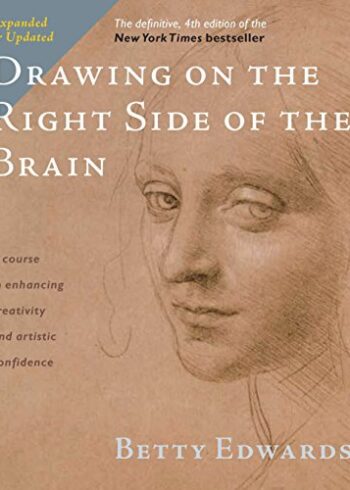
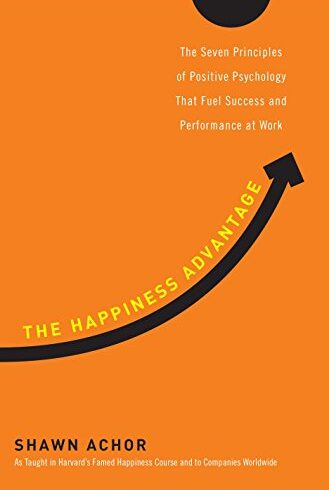
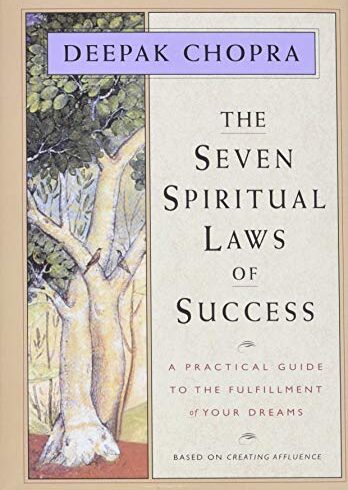
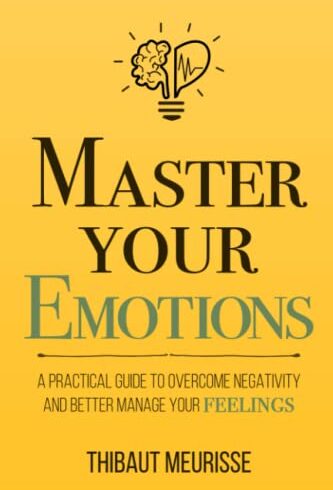

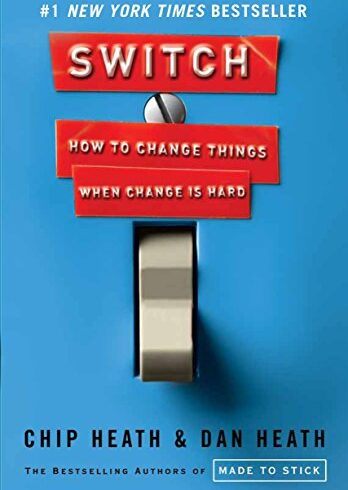
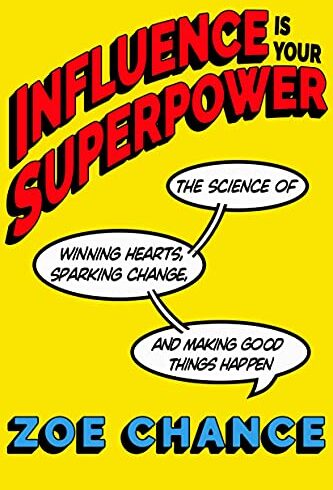




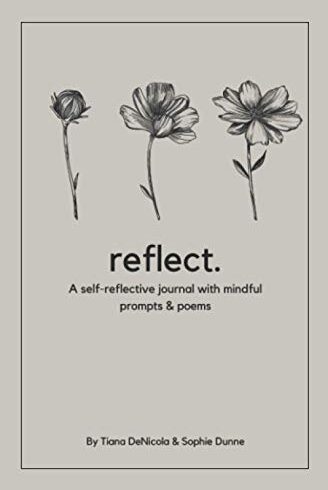


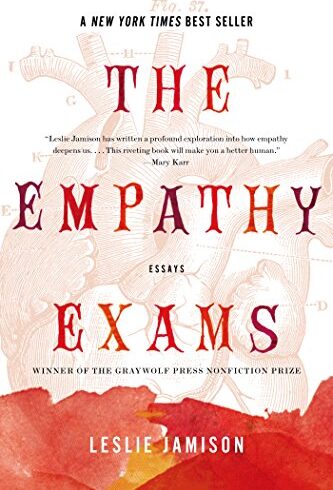



Haical Sajovic Haddad –
I previously wrote this review right after reading the book. Today, February 15th, after applying James’s system for 100 days on a few tiny habits, I feel compelled to share updates with you because they have sincerely worked., I will divide the review into 5 parts. The first part is a summary of the book with short excerpts highlighted while taking notes. Next, I hope to share pieces of advice that have motivated me while building new habits. Following that, I will share how I implemented the first 3 habits throughout these months. Then, some thoughts to whom I would recommend reading the book. Last, there are 4 complementary readings., SUMMARY, [Introduction] James starts by sharing personal strategies he implemented to recover from a serious accident in high school. That event forced him to improve the quality of his routine to get his life in order, coming to the conclusion that “we all deal with setbacks, but in the long run, the quality of our lives often depends on the quality of our habits. With the same habits, you will end up with the same results. But with better habits, anything is possible.”, [Section I : The Fundamentals], [Chapter 1] Here we learn the power of compounding effect: changes that seem small and unimportant at any given day will compound into remarkable results if we are willing to stick with them for months and years. James explains that “breakthrough moments are often the result of many previous actions, which build up the potential required to unleash a major change.” Comparing to habits, he shows that bamboo can barely be seen during the first couple of years while the roots grow underground before exploding for almost 100 feet into the air in a few weeks. From that perspective, we come to understand the best outcomes are generally delayed., [Chapter 2] Based on a 3-layer concentric circle behavior change model—divided into outcome change, process change, and identity change—James explains that we should pay attention to our inner identity by focusing on beliefs, assumptions, and values. “Many people begin the process of changing their habits by focusing on what they want to achieve. This leads us to outcome-based habits. The alternative is to build identity-based habits. With this approach, we start by focusing on who we wish to become.” The strongest changes, then, happen from inside out, starting from our identity, passing through the process, and ultimately changing the outcome., [Chapter 3] In this chapter we are introduced to a 4-step framework, which is composed of cue, craving, response, and reward. James calls it ‘The 4 Laws of Behavior Change’. He then explains that we can think of each law as a lever that influences our behavior—when the levers are in the right positions, they create good habits effortless whereas when they are in the wrong position, it is nearly impossible. Through examples, he explains that “the cue triggers a craving, which motivates a response, which provides a reward, which satisfies the craving and, ultimately, becomes associated with the cue.” Together they create a habit loop that, when repeated many times, habits become automatic., [Section II : Make It Obvious], [Chapter 4] A primer on how cues play a crucial role in predicting habit formation without consciously thinking about the outcomes. Once our habits become so common, the cues associated with them become essentially invisible because they are deeply encoded. If we want to create better habits, a good idea is to be aware of the cues. James finishes up by sharing a strategy called ‘Habits Scorecard’—a simple exercise to become more aware of our behavior on a daily basis. We first write down a chronological list of our daily habits and, once we have a full list, we score each habit as an effective, ineffective, or neutral habit. Besides noticing what is actually going on, we can notice if certain behaviors help us become the type of person we wish to be., [Chapter 5] The cues that can trigger a habit come in a wide range of forms, and the 2 most common cues are time and location. When we make a specific plan for when and where we will perform a new habit, we are more likely to follow through. Stacking our habits by pairing a new habit with a current habit is a form to connect our behavior to our own advantage. An example when building a daily journaling habit would be: “after I pour my cup of coffee each morning, I will journal for 5 minutes.”, [Chapter 6] This chapter shows how our environment plays a crucial role in defining habit behaviors. “Given that we are more dependent on vision than any other sense, it should come as no surprise that visual cues are the greatest catalyst of our behavior.” To build good habits, then, we should either make desirable cues obvious in our environment or build new habits in a new environment to avoid fighting against old ones., [Chapter 7] One of the most practical ways to break a bad habit is to reduce exposure to the cue that causes it. As James points out, “it is easier to avoid temptation than resist it.”, [Section III : Make It Attractive], [Chapter 8] James explains how the modern food industry has created products that are more attractive and addictive to consumers, and by doing so he shows that the more attractive an opportunity is, the more likely it is to become habit-forming. Every behavior that is highly habit-forming tends to be associated with higher levels of dopamine. It is the anticipation of a reward that motivates us to take action. “Temptation bundling is one way to make your habits more attractive. The strategy is to pair an action you want to do with an action you need to do.”, [Chapter 9] “We tend to adopt habits that are praised and approved of by our culture because we have a strong desire to fit in and belong to the tribe.” That said, it is common to pick up habits and behaviors from our parents, peers, and colleagues. There is also a tremendous internal pressure to comply with the norms of the tribe. And, finally, we try to copy the behavior of successful people because we desire success ourselves. One of the best strategies to build better habits is to join a culture where the desired behavior is the normal behavior., [Chapter 10] To avoid unnecessary and detrimental cravings, we should highlight the benefits of avoiding a bad habit by making it seem unattractive. “Habits are unattractive when we associate them with negative feelings.”, [Section IV : Make It Easy], [Chapter 11] “All habits follow a similar trajectory from effortful practice to automatic behavior, a process known as automaticity. Automaticity is the ability to perform a behavior without thinking about each step, which occurs when the nonconscious mind takes over.” The key component is to pay close attention to the frequency we perform a habit, not much for how long we have been practicing it., [Chapter 12] Since every action requires a certain amount of energy, we are motivated to do what is easy. By contrast, the more energy required, the less likely it is to occur. “You don’t actually want the habit itself. What you really want is the outcome the habit delivers. The greater the obstacle, the more friction there is between you and your desired end state.” That is why we should reduce the friction associated with our habits by creating a prosperous environment to make future actions easier., [Chapter 13] There are decisive moments that deliver an outsized impact every single day. As James puts, these decisive moments are a fork in the road, sending us in the direction of a productive path or an unproductive one. To avoid procrastination, the skill of ‘Showing Up’ says that we should start a new habit by taking baby steps, making it as easy as possible to take action. “A new habit should not feel like a challenge. The actions that follow can be challenging, but the first 2 minutes should be easy. What you want is a gateway habit that naturally leads you down a more productive path.” He calls it the ‘Two-Minute Rule’, meaning that new habits should take less than 2 minutes to do in the beginning. Once the habit is established we can improve and master the finer details., [Chapter 14] In order to keep bad habits away is to make them difficult in the first place. There are 2 interesting strategies to improve our future behavior. 1 Make good choices in advance before we can fall victim to temptation in the future. James gives a personal example by sharing that whenever he is looking to cut calories he will ask the waiter to split his meal and box half of it to go before the meal is served. If, however, he waits for the meal to be served and tries to eat just half, that would never happen. 2 Make onetime actions that can automate our future habits and deliver increasing returns over time such as buying a good water filter, unsubscribing from unwanted emails, moving to a friendlier neighborhood, buying a standing desk, or setting up automatic bill pay., [Section V : Make It Satisfying], [Chapter 15] We should make sure to feel immediately satisfied after performing a new habit to increase the odds that the behavior will be repeated next time. “The human brain has evolved to prioritize immediate rewards over delayed rewards.” For that, we can add a little bit of immediate pleasure to the habits that pay off in the long-run., [Chapter 16] Here we learn how to measure our progress by tracking our habits. The immediate satisfaction it delivers—as mentioned earlier in Chapter 15—is one of the many benefits that standout. Besides that, James says, “when we get a signal that we are moving forward, we become more motivated to continue down that path.” The most basic format to track our habits is to get a calendar and mark an X each time we stick with our routine. One of the most important passages of the entire book is as follows: “If you miss one day, try to get back into it as quickly as possible. The first mistake is never the one that ruins you. It is the spiral of repeated mistakes that follows. Missing once is an accident. Missing twice is the start of a new habit. This is a distinguishing feature between winners and losers. Anyone can have a bad performance, a bad workout, or a bad day at work. But when successful people fail, they rebound quickly.”, [Chapter 17] In order to prevent bad habits and/or eliminate unhealthy behaviors, James says that we could either add an instant cost to the action or make it painful. A habit contract is also another strategy to hold our accountability: “It is a verbal or written agreement in which you state your commitment to a particular habit and the punishment that will occur if you don’t follow through. Then you find one to two people to act as your accountability partners and sign off on the contract with you.”, [Section VI : Advanced Techniques], [Chapter 18] We learn how to distinguish habits when genes may or may not influence our performance especially for competitive activities. “One of the best ways to ensure your habits remain satisfying over the long-run is to pick behaviors that align with your personality and skills.” James proposes us to set some time apart to explore new activities in the beginning, before shifting our focus to exploit them thoroughly., [Chapter 19] When we find the sweet spot of our ability we tend to learn best and fastest. The ‘Goldilocks Rule’ states that “humans experience peak motivation when working on tasks that are right on the edge of their current abilities. Not too hard. Not too easy. Just right.”, [Chapter 20] One downside of certain habits, James explains, is that we may stop paying attention to the little details and errors. To counterbalance that we should review and reflect on the process over time to remain conscious of our own performance. Using a simple chart to convey his message, we learn that “the process of mastery requires that you progressively layer improvements on top of one another, each habit building upon the last until a new level of performance has been reached and a higher range of skills has been internalized.”, PERSONAL THOUGHTS, Reading the book twice helped me take better notes and capture details. In the meantime, I thought about 3 simple strategies that could improve our adherence to new habits. Let me share these strategies here with you, and in the following section, I will describe how I managed to cultivate the first 3 new habits upon reading the book—following the system proposed by James together with these 3 strategies., 1 The first strategy is about determining a ‘commitment time frame’ to avoid excuses during this initial trial period. A 1-month time frame is a fair commitment, choosing to start on the first day of the month to practice it every single day for a full month. Just at the end of the period, I will take the time to reflect and evaluate the pros and cons., 2 The next one is to choose only 1 new habit each month. In doing so we become familiar with the practice intentionally while we develop a sense of purpose., 3 Last, during the first month of any new habit, I noticed that if I spend time exploring the details and the benefits, my motivation stays high. It doesn’t only help us create better practices, but it is also inspiring to learn from others who have succeeded previously by adding the same habit into their lives. Podcasts, articles, videos, books, online courses, tutorials, and blog posts are all good sources., IMPLEMENTATION OF NEW HABITS, [Nov 1, 2018] I had been wanting to journal on a daily basis for many years but that had never happened. Although I have carried a notebook with me for quite a while, it has never worked as a real journal—a daily routine, when we sit down and write personal thoughts, intentions, and reflections at around the same time. Instead, it has been mostly used to take notes during meetings, to write down ideas and thoughts, to express travel memories, and to doodle. Today, after 3+ months, I haven’t looked back once, and still can’t believe it took me that long to start this daily habit. During the first month, I read blog posts, watched videos, and even read a short and inexpensive book to foster my creativity., [Dec 1, 2018] I have been impressed by the physical capabilities we can develop through body movement. Although yoga has been a special part of my life since I was 18, I hadn’t given proper attention to handstands. But now, after 2+ months practicing it every day, it is rewarding to see improvements on a weekly basis. Again, I definitely recommend watching videos and reading tutorials to find your favorite method. This is the perfect habit to stack at the end or in the middle of any physical movement practice you may enjoy., [Jan 1, 2019] By now we know the benefits of cold showers—ranging from healthier skin appearance all the way to a more resilient perspective of the world. I had previously taken cold showers for 3 months in 2017, but it was a “goal” mindset instead of a “habit” mindset. After that trial I set aside and, although I have kept taking cold showers once or twice a week since then, I wished cold showers was the default mode. Now, after 1+ month, I can’t see myself taking warm showers. After all, it is about intention. Again, we can learn uncountable benefits of cold showers by reading success stories. One of my inspirations was Wim Hof. It isn’t comfortable in the beginning of any chosen day, but after 3-4 minutes, both my breath and thoughts calm down., Putting them together, these 3 habits don’t take more than 30 minutes of my day. While I spend about 10 minutes journaling and 10 more minutes practicing handstands, I save 5 minutes taking cold showers because I won’t stay any longer than necessary., RECOMMENDATION, 1 First, if you have watched videos, listened to podcasts, read articles and books on habit formation and, after all that, you feel satisfied, then, please, save your money and time., 2 However, if you are like me, that even after reading a few books on building habits and having successfully added good habits to your life, feel that there is still room for improvement, this book can be a terrific addition., 3 Last, if you haven’t spent much time and energy discovering a good system to build lasting habits while breaking bad ones, please, read this book., COMPLEMENTARY READINGS, 1 Game Changers, by Dave Asprey, exposed me to a wealth array of ideas/habits/tools that have helped me decide which new habit to build next. The book is divided into 46 laws., 2 Essentialism, by Greg McKeown, helped me focus on less but more important tasks, giving clarity to what matters most. This is especially interesting to break bad habits., 3 The Talent Code, by Daniel Coyle, brought more motivation when learning new skills based on the assumptions that we develop new talents through deep practices, finding our ignition identity, and having the right coach to guide us genuinely. I read it many years ago, then, a few years back, I read his following book called The Little Book of Talent—which is perhaps even more to the point., 4 The Systems View of Life, by Fritjof Capra, enlightened my perspectives on how nature and living beings are systematically integrated. It is a profound and slightly academic book that can complement Atomic Habits especially to tie together the 4-step framework into the feedback loop system., I sincerely hope you, too, have fun while building new habits., Take care,, Haical
Jim Muccio –
James Clear in his truly remarkable book, “Atomic Habits” comes to me much later in life. After I had figured out most of life’s secrets through my own observations. Trying to pass those experiences on to your kid is still not easy. If you’ve ever formed a habit, or worse, formed a bad habit, nothing changes overnight. But if we want change, we hope we can change it overnight. But if it doesn’t change we are quick to give up and return right back to the older bad habits we learned. Everyone should go to military school like that “Finkelstein sh*t-kid”. Quoting from Cheech & Chong Up In Smoke, if you didn’t get the reference. Here’s another concept about military school in the movie in which Robert Duvall played the Great Santini, written by Pat Conroy.., You may not have to go to military school if your dad forces you to learn how to make your bed, square your corners, clean your room. Perhaps you never figured it out. A military school, above all others, teaches discipline repetitively so it becomes a habit. Polishing your shoes. Cleaning your weapon. Humans, as well as most animals, do repetitive things. We form good habits. And we form bad habits. Habits are a form of discipline. A friend of mine used to say, there are two types of discipline. Your own, and somebody-else’s. Somebody-else’s usually hurts more. I’ve often wondered if his dad may have had similar DNA to the Great Santini (An authoritarian discipline-junkie and a real prick of a dad). Creating habits, good habits, should be the goal of good parenting. I’m not going to judge the creation of one person’s habits above another, but things like sleep hygiene and personal hygiene are probably universal. One doesn’t need a whistle to create good habits, as Baron Von Trappe used in the Sound of Music, but sometimes it helps., James Clear instructions on changing habits and creating new habits are so simple we should all be changing our bad habits today. When I first conceptualized what may be inside the book, I thought, this jackass knows what’s good for us and we have to start picking up these habits because successful habits have been studied in successful people and we want to be like them. Ala Steven Covey’s “7 Habits of Highly Successful People”. I didn’t give James Clear sufficient credit for what he set out to do. His book is not about “a particular habit”. His book is a method of habit forming and habit breaking. If you want to start a bad habit, his book is just as effective. But it is the recipe of human nature that any program that strives to bend, mold, form, squeeze, or otherwise alter human behavior must understand before undergoing any such task. Create that right habit, and you will have success. To me, any psychological therapy one undergoes, should also start with habits. Use Clear’s formula, to write down every habit, good or bad, and then figure out what habits you want to keep, which ones need to go away, and what good things you need to form. Then build the strategy to break each one and create the missing ones. That should be the recipe for almost any human work that needs to be done. Clear’s recipe will work. I’ve been using most of the techniques for years without realizing it. I am certain his formula will work. It unlocks the keys to controlling human behavior. Which, in the wrong hands, could be dangerous., Molding people in an ethical way is important. Clear stays away from any moral questions since his book is pointed at the individual for self-help. . But if you teach habits as orthodox doctrine, just like a military school indoctrinates young minds into the disciplines of military habit (since you can’t have insubordination in the fox hole) , so too does any fundamentalist institution. Master the administration of habit and you can control those within its grasp. Ten years before 9/11, Usama Bin Laden knelt down with his minions at noon everyday to pray and lecture them on the wickedness of the United States thereby brainwashing his army of evil doers we know as Al Qaeda. Once we’ve formed a habit, we no longer ask why we are doing something. We “Just Do It”. That’s a good thing, from Nike’s perspective, if it means running for fitness and buying their running shoes. It’s a bad thing if the habits we learn harm ourselves, others, or the world around us.